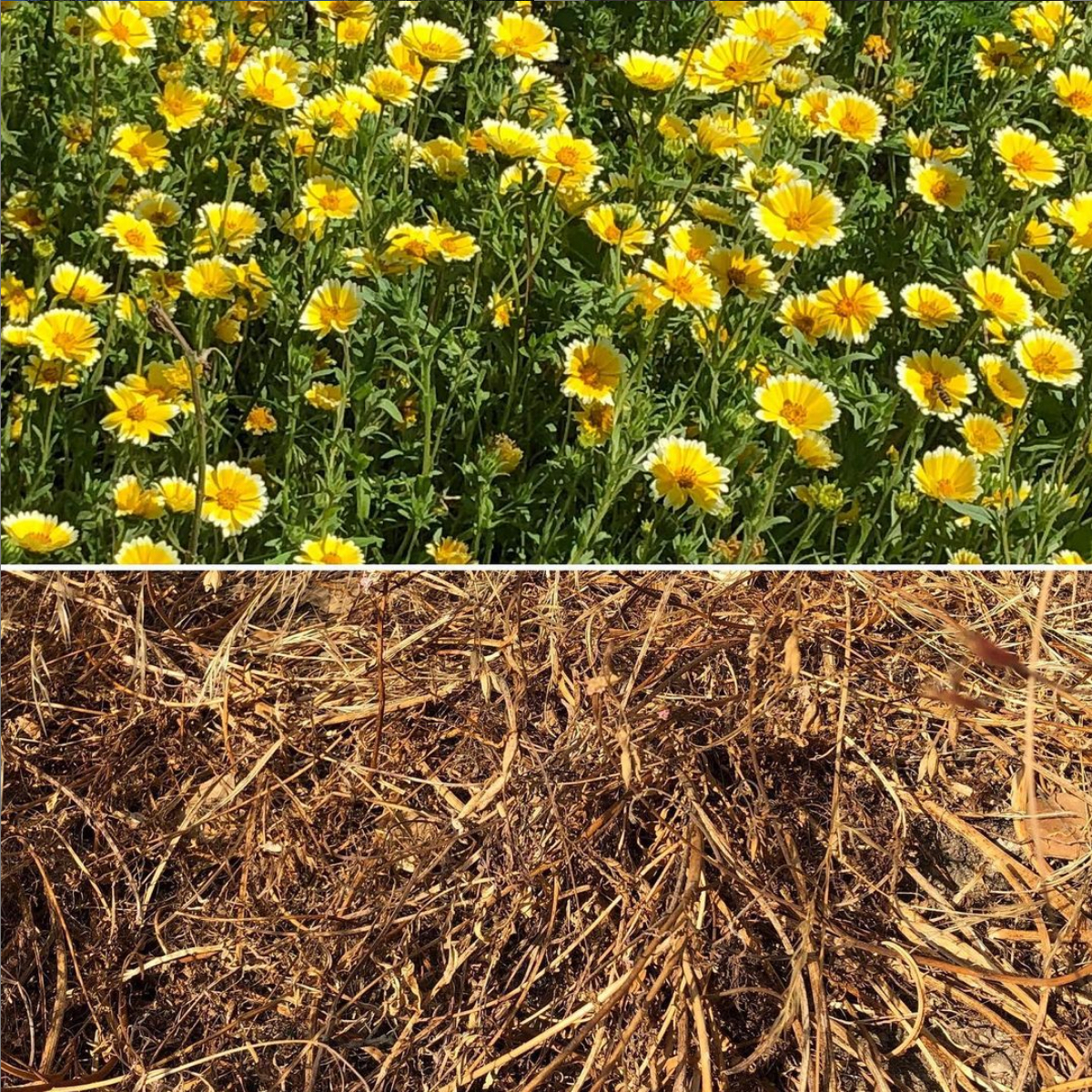It’s a sweltering afternoon in the LANPS garden, sometime in July. The Climbing Penstemon (Keckiella cordifolia), bursting with orange-red buds just a few months ago, is now a thatch of spindly sticks with a few, shriveled leaves hanging on. The lushly green perennial grasses of March, like Purple Needlegrass (Stipa pulchra), are now the color of straw, their wispy seed heads nodding in the occasional, faint breeze. The once sylvan Bitter Gooseberries (Ribes amarum) are now nothing more than a leafless thicket of thorns. Perhaps most dramatically, what was a kaleidoscopic meadow of annual wildflowers in spring now looks like a vacant lot.
Although most of these plants are only experiencing their natural summer dormancy, at this time of year, to the untrained eye, many of the plants in the LANPS garden look, quite literally, dead.
Showing someone around your native garden during the height of summer can feel a little awkward, to be perfectly honest, as most people (outside the relatively small subset of native plant nerds) are surprisingly unfamiliar with the concept of summer dormancy – the evolutionary survival strategy employed by many native California plants in order to survive our long, dry summers. As we move through the garden, I find myself making excuses for a particular plant’s frowsy appearance.
“It only looks dead,” I explain. “It’s actually dormant.”
“Oh, really?,” this someone responds, not without an underlying note of skepticism (or is it pity?) It’s like I’m being humored while I introduce someone to an imaginary friend.
And yet, outside the glare of others’ observations, I have come to appreciate this time in my garden and to truly savor its subtle beauty. I have also learned to enjoy the pleasant melancholy of the surrounding quiescence, the California equivalent of late fall on the East Coast, when the plant world is shutting down ahead of the inhospitably cold temperatures of winter. I admire our California native plants their analogue summer adaptation: “When it’s hot and dry, withdraw until the weather cools off and it starts to rain again.”
As the garden assumes this more introspective aspect over the course of these long, summer days, I think about the seeds the wildflowers broadcast as they ripened in May and June, imagining them as they bed down in the uppermost, dry-as-dust layer of soil, waiting for shorter days, cooler nights, and a little rainfall. On suffocating August afternoons, there is a sense that every seed – the whole garden, in fact – is literally holding its breath until conditions are once again favorable for an exhalation of green.
Coexisting with summer dormancy in your native garden also requires a certain amount of faith that your seemingly dead plants are still alive. It took me more time than I’d like to admit to figure out that the Epilobium I kept pulling up wasn’t dead after it finished flowering at the end of the summer. Those brittle, dry, denuded sticks couldn’t possibly belong to a living plant, I reasoned. What a miracle it seemed that December, when I first noticed the tiny, green shoots pushing up from the soil around the crown of a plant that had looked dead-as-a-doornail in September. Even though I now know enough not to assume a plant is dead until it’s had a chance to reawaken in the fall, it still seems miraculous to me when it does, the closest thing in Southern California to a Crocus pushing up through the snow.
The wonder of it all notwithstanding, an appreciation of summer dormancy is admittedly something of an acquired taste. It may also be one of the most daunting challenges when it comes to encouraging more people to garden with California native plants. A summer-dry native garden will definitely look a little scraggly (okay, very scraggly) by the middle of July and stay that way until at least November, testing the tolerance of even the most ardent beginner.
What’s more, gardening with summer-dormant plants demands a rather extreme, internal paradigm shift. Because most of us are used to gardening with exotic plants that are native to regions where there are wet summers, we’re also used to responding to hotter weather in our gardens by watering more. If you happen to be a tropical plant, like a Hibiscus, you’ll appreciate the extra moisture. If you’re a chaparral species like Wooly Blue Curls (Trichostema lanatum), not so much. In fact, watering T. lanatum in the summer – even once – can kill it, seemingly overnight, as the combination of high temperatures and moisture, so alien to a plant that has evolved in a climate where the hottest months are bone dry, awakens pathogens in the soil against which the plant has no adaptive defenses. Counterintuitive as it seems, this means that if you water a California native garden in the summer the same way you would water a typical garden of exotics, you may lose a lot of plants.
What’s needed, instead, is a complete reorientation to the very different rhythms of our actual, Mediterranean climate (hot, dry summers/mild wet winters), as opposed to those of the Oceanic Climate on the East Coast and in Western Europe (warm wet summers/cold wet winters), a climate most gardeners seem to imagine we inhabit in California. But it isn’t easy to break free of this shared delusion, part of the long legacy of European colonization, with its ingrained, nostalgic patterns. Even after gardening with California native plants for over a decade, it is still sometimes all I can do to restrain myself from grabbing a hose when a plant is looking particularly distressed in the summer heat.
It should be noted, parenthetically, that the rubric of “California Native Plants” may be a bit too broad in this instance and that some native species are more forgiving of summer moisture than others. Obviously, a native riparian tree like a Western Sycamore (Platanus racemosa) will take all the water you can give it in the summer and will love every drop. But there are other, non-riparian native plants that also don’t mind a little summer water – Toyon (Heteromeles arbutifolia) and Holly Leaf Redberry (Rhamnus ilicifolia) for instance. There is also an important exception for newly installed plants with still-immature root balls, most of which will need at least some supplemental irrigation during their first few summers in the ground. (Striking the perfect balance between watering a new plant too much (which could kill it) and not enough (which could also kill it) is essentially the Holy Grail of native plant gardening.)
Most native plant garden tours are scheduled in April, which makes obvious sense. But perhaps there should be a corresponding summer tour in August. Visitors could see the same gardens at the height (or rather, the nadir) of summer dormancy and become more accustomed to its severe yet serene beauty. As for me, I will try not to feel so self-conscious about summer dormancy the next time I show my garden to someone in July. I will more fully embrace my garden’s summer dormancy while awaiting the Autumnal Equinox. Sitting under the oaks (with a glass of crisp Sauvignon Blanc), I will likely nod off in the heat, an old man emulating the patience of these extraordinary plants as they slumber on, dreaming of rain.
– Eric Ameria
© 2021 by LA Native Plant Source



